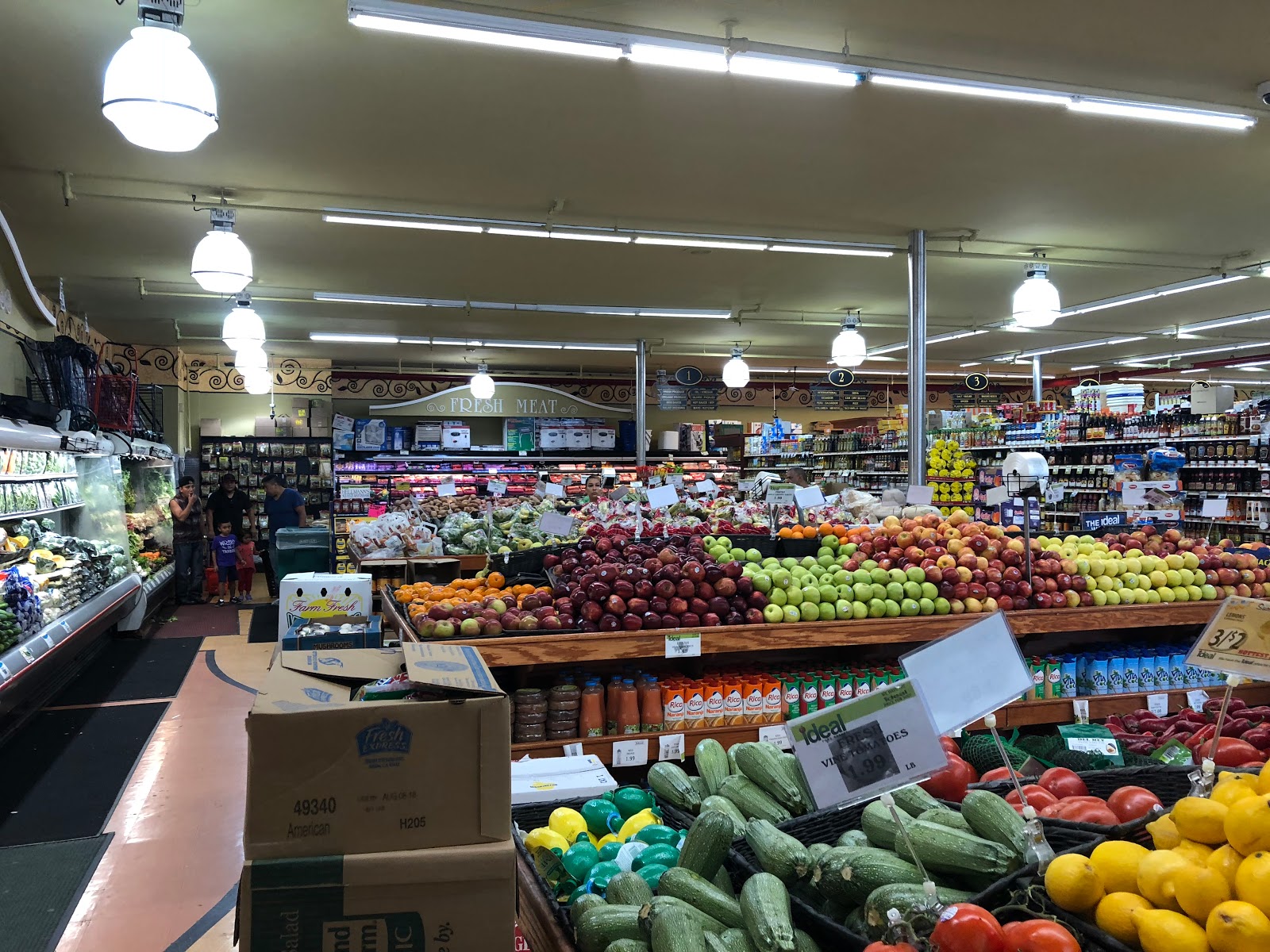Embark on a culinary journey as we explore the concept of an ideal food basket, a meticulously curated collection of nutritious and accessible ingredients that empowers individuals and communities to thrive. Join us as we delve into the intricate balance of macronutrients, micronutrients, and food groups, uncovering the secrets to a diet that nourishes both body and mind.
From the vibrant hues of fresh produce to the comforting aromas of whole grains, our exploration will unveil the diverse components of an ideal food basket, empowering you with the knowledge to make informed choices that support your health and well-being.
Food Groups and Variety: Ideal Food Basket
A balanced diet should include a wide variety of foods from all food groups to ensure optimal nutrient intake. The ideal food basket incorporates diverse food groups to cater to the body’s nutritional needs.
Consuming a range of foods within each food group provides a comprehensive spectrum of nutrients. Fruits, vegetables, and whole grains offer an array of vitamins, minerals, fiber, and antioxidants. Lean protein sources like fish, poultry, and beans provide essential amino acids for muscle growth and repair.
Healthy fats found in nuts, seeds, and olive oil support hormone production, brain function, and cell health.
Fruits and Vegetables
Fruits and vegetables are rich in vitamins, minerals, fiber, and antioxidants. They play a crucial role in maintaining overall health and well-being. Include a variety of fruits and vegetables in your daily diet to reap their diverse nutritional benefits.
- Apples, bananas, berries, citrus fruits, melons
- Broccoli, carrots, leafy greens, tomatoes, onions
Whole Grains
Whole grains are a valuable source of fiber, vitamins, minerals, and antioxidants. They contribute to satiety, regulate blood sugar levels, and support digestive health.
- Brown rice, quinoa, oatmeal, whole-wheat bread
Lean Protein
Lean protein sources provide essential amino acids necessary for muscle growth and repair. They also contribute to satiety and support overall health.
- Fish (salmon, tuna), poultry (chicken, turkey), beans, lentils
Healthy Fats
Healthy fats play a vital role in hormone production, brain function, and cell health. Include sources of healthy fats in moderation to support overall well-being.
- Nuts (almonds, walnuts), seeds (chia seeds, flaxseeds), olive oil
Calorie and Portion Control

Understanding your calorie needs and practicing portion control are crucial for maintaining a balanced diet and managing weight. Calorie requirements vary based on factors such as age, activity level, and health conditions.
Determining Calorie Needs
- Consult a healthcare professional or registered dietitian to determine your personalized calorie needs.
- Consider your age, height, weight, and activity level.
- Health conditions, such as thyroid issues or diabetes, can affect calorie requirements.
Portion Control for Different Food Groups
Appropriate portion sizes help you meet your calorie needs without overeating. Here are some general guidelines:
- Fruits and vegetables:Aim for 2-4 cups per day. A cup of raw vegetables is about the size of a baseball.
- Lean protein:Include 3-5 ounces per meal. A 3-ounce serving of grilled chicken is about the size of a deck of cards.
- Whole grains:Limit to 1/2-1 cup per meal. A half-cup of cooked rice is about the size of a tennis ball.
- Healthy fats:Include 1-2 tablespoons per day. A tablespoon of olive oil is about the size of a ping-pong ball.
Tips for Managing Calorie Intake
- Use measuring cups and spoons to ensure accurate portion sizes.
- Read food labels to understand calorie content.
- Avoid sugary drinks and processed foods high in calories.
- Eat slowly and mindfully, paying attention to hunger cues.
- Seek professional guidance if struggling with calorie management.
Cultural and Regional Influences
Cultural and regional preferences play a significant role in shaping the composition of ideal food baskets. Different cultures have unique dietary habits, staple foods, and traditional dishes that reflect their history, geography, and social norms.
Staple Foods and Traditional Dishes
Staple foods are the foundation of many cultures’ diets. For example, rice is a staple food in many Asian countries, while corn is a staple food in Mexico and Central America. Traditional dishes often incorporate these staple foods and reflect the cultural heritage of a region.
For instance, sushi is a traditional Japanese dish made with rice, seaweed, and fish, while tacos are a traditional Mexican dish made with corn tortillas, meat, and vegetables.
Importance of Cultural Diversity
Considering cultural diversity is crucial when designing food assistance programs. Programs that do not account for cultural preferences may fail to meet the nutritional needs of the population they are intended to serve. For example, a food assistance program that provides only Western-style foods may not be suitable for a population with a predominantly Asian diet.By
understanding and incorporating cultural and regional influences into food assistance programs, we can ensure that these programs are culturally appropriate, meet the nutritional needs of diverse populations, and promote food security.
Sustainability and Environmental Impact

Our food choices significantly impact the environment. Food production consumes vast amounts of water, land, and energy, contributing to greenhouse gas emissions, deforestation, and water scarcity. Embracing sustainable practices in food production and consumption is crucial for a healthier planet and future.
Organic Farming
Organic farming practices prioritize the use of natural methods to cultivate crops and raise livestock. By avoiding synthetic pesticides, fertilizers, and antibiotics, organic farming helps protect biodiversity, soil health, and water quality.
- Organic produce contains higher levels of antioxidants and nutrients compared to conventionally farmed counterparts.
- Organic farming systems promote soil fertility and reduce erosion, enhancing long-term soil health.
- Eliminating synthetic pesticides and fertilizers reduces water pollution and protects aquatic ecosystems.
Reducing Food Waste
Food waste is a major environmental concern, contributing to greenhouse gas emissions and resource depletion. Implementing measures to reduce food waste is essential for sustainability.
- Plan meals and create shopping lists to avoid overbuying and reduce food spoilage.
- Store food properly to extend its shelf life and minimize waste.
- Compost food scraps and organic waste to enrich soil and reduce landfill waste.
- Support initiatives that recover and redistribute surplus food to those in need.
Incorporating Sustainable Choices
Incorporating sustainable food choices into the ideal food basket requires conscious decision-making and support for sustainable practices.
- Prioritize organic produce, especially for foods with high pesticide residues.
- Choose locally grown and seasonal produce to reduce transportation emissions.
- Reduce meat consumption and opt for plant-based alternatives to lower greenhouse gas emissions.
- Support farmers’ markets and community-supported agriculture (CSA) programs that promote sustainable farming practices.
Accessibility and Affordability

Ensuring the ideal food basket is accessible and affordable to all populations is crucial for promoting equitable access to nutritious food and improving overall health outcomes. Food insecurity and malnutrition remain significant challenges, particularly among underserved communities, and addressing these issues requires comprehensive strategies that prioritize accessibility and affordability.
Subsidies and Assistance Programs
- Government-funded programs, such as the Supplemental Nutrition Assistance Program (SNAP) in the United States, provide financial assistance to low-income individuals and families to purchase nutritious food.
- Subsidies for farmers and food producers can help reduce production costs and make nutritious food more affordable for consumers.
Community-Based Initiatives
- Food banks and pantries provide emergency food assistance to individuals and families in need.
- Community gardens and urban agriculture programs empower communities to grow their own food, promoting self-sufficiency and reducing food costs.
Education and Empowerment, Ideal food basket
- Nutrition education programs teach individuals about healthy eating habits and how to make nutritious choices on a budget.
- Empowering consumers with information about food prices and resources can help them make informed decisions and stretch their food dollars.
Closing Summary
As we conclude our exploration of the ideal food basket, let us remember that nourishment extends beyond the physical realm, touching upon cultural traditions, environmental sustainability, and social equity. By embracing a holistic approach to food, we can create a world where everyone has access to the nourishment they need to flourish.
